Do you have a question about the Iiyama ProLite B2483HSU and is the answer not in the manual?
Critical warnings and guidelines to ensure safe operation and prevent hazards.
Details common LCD phenomena and normal operational behaviors.
Information and contact advice for seeking service or support for the unit.
Guidelines on how to clean the monitor safely and effectively.
Highlights key technical specifications and functionalities of the LCD monitor.
Instructions to verify all included accessories are present in the package.
Instructions and warnings for safely mounting the monitor on a wall.
Step-by-step guide for attaching the monitor base for ProLite B2483HSU.
Step-by-step guide for detaching the monitor base for ProLite B2483HSU.
Step-by-step guide for attaching the monitor base for ProLite E2483HSU.
Step-by-step guide for detaching the monitor base for ProLite E2483HSU.
Identifies and explains the function of front panel buttons and indicators.
Identifies and explains the function of rear panel input/output connectors.
Identifies and explains the function of front panel buttons and indicators.
Identifies and explains the function of rear panel input/output connectors.
Explains how to use the OSD menu and buttons to adjust monitor settings.
Details the auto-adjustment feature for image position, pixel clock, and phase.
Explains how to adjust brightness and contrast settings for optimal display.
Guides on adjusting horizontal/vertical position, pixel clock, and phase.
Options for adjusting color temperature and user-defined color presets.
Allows selection of the OSD menu language from multiple supported languages.
Option to restore factory preset settings for the monitor.
Adjusts the sharpness of the image from soft to sharp.
Enables or disables the Display Data Channel/Command Interface.
Displays current input signal resolution and refresh rate.
Settings for Adv. Contrast, Display Mode, and Aspect Ratio.
Controls response time enhancement and the initial boot logo.
Manually or automatically selects the input signal source.
Adjusts volume and mute status, and selects audio input source.
Adjusts backlight brightness for power saving.
Provides preset color modes for different viewing environments.
Reduces blue light emission for eye comfort.
Enables OSD lock and power switch lock functions.
Guides on setting optimal resolution and using the adjustment pattern.
Steps for auto adjustment and manual tuning of V.Position and H.Position.
Adjusting Pixel Clock for image stretching and Phase for flicker correction.
Correcting horizontal wavy noise, flicker, or blur using Phase adjustment.
Final adjustments to brightness and color after other settings.
Details the monitor's low power consumption mode and indicator.
Checks for common problems when the picture does not appear or is incorrect.
Troubleshooting steps for screen synchronization and centering issues.
Resolving problems with screen brightness, shaking, or noise.
Guides for resolving issues related to sound output and volume levels.
Troubleshooting steps for unexpected noises from the monitor.
Critical warnings and guidelines to ensure safe operation and prevent hazards.
Details common LCD phenomena and normal operational behaviors.
Information and contact advice for seeking service or support for the unit.
Guidelines on how to clean the monitor safely and effectively.
Highlights key technical specifications and functionalities of the LCD monitor.
Instructions to verify all included accessories are present in the package.
Instructions and warnings for safely mounting the monitor on a wall.
Step-by-step guide for attaching the monitor base for ProLite B2483HSU.
Step-by-step guide for detaching the monitor base for ProLite B2483HSU.
Step-by-step guide for attaching the monitor base for ProLite E2483HSU.
Step-by-step guide for detaching the monitor base for ProLite E2483HSU.
Identifies and explains the function of front panel buttons and indicators.
Identifies and explains the function of rear panel input/output connectors.
Identifies and explains the function of front panel buttons and indicators.
Identifies and explains the function of rear panel input/output connectors.
Explains how to use the OSD menu and buttons to adjust monitor settings.
Details the auto-adjustment feature for image position, pixel clock, and phase.
Explains how to adjust brightness and contrast settings for optimal display.
Guides on adjusting horizontal/vertical position, pixel clock, and phase.
Options for adjusting color temperature and user-defined color presets.
Allows selection of the OSD menu language from multiple supported languages.
Option to restore factory preset settings for the monitor.
Adjusts the sharpness of the image from soft to sharp.
Enables or disables the Display Data Channel/Command Interface.
Displays current input signal resolution and refresh rate.
Settings for Adv. Contrast, Display Mode, and Aspect Ratio.
Controls response time enhancement and the initial boot logo.
Manually or automatically selects the input signal source.
Adjusts volume and mute status, and selects audio input source.
Adjusts backlight brightness for power saving.
Provides preset color modes for different viewing environments.
Reduces blue light emission for eye comfort.
Enables OSD lock and power switch lock functions.
Guides on setting optimal resolution and using the adjustment pattern.
Steps for auto adjustment and manual tuning of V.Position and H.Position.
Adjusting Pixel Clock for image stretching and Phase for flicker correction.
Correcting horizontal wavy noise, flicker, or blur using Phase adjustment.
Final adjustments to brightness and color after other settings.
Details the monitor's low power consumption mode and indicator.
Checks for common problems when the picture does not appear or is incorrect.
Troubleshooting steps for screen synchronization and centering issues.
Resolving problems with screen brightness, shaking, or noise.
Guides for resolving issues related to sound output and volume levels.
Troubleshooting steps for unexpected noises from the monitor.
| Panel type | TN |
|---|---|
| Pixel pitch | 0.277 x 0.277 mm |
| Aspect ratio | 16:9 |
| Screen shape | Flat |
| Response time | 2 ms |
| Display surface | - |
| Display diagonal | 24 \ |
| Separate H/V sync | Yes |
| Display technology | LED |
| Vertical scan range | 55 - 75 Hz |
| Horizontal scan range | 30 - 80 kHz |
| Supported video modes | 1080p |
| Viewable size, vertical | 531.4 mm |
| Viewing angle, vertical | 160 ° |
| Contrast ratio (dynamic) | 12000000:1 |
| Display number of colors | 16.78 million colors |
| Viewable size, horizontal | 298.9 mm |
| Viewing angle, horizontal | 170 ° |
| Display brightness (typical) | 250 cd/m² |
| Supported graphics resolutions | 1920 x 1080 (HD 1080) |
| Pivot angle | 0 - 90 ° |
| LED indicators | Power |
| Tilt angle range | -5 - 22 ° |
| Cable lock slot type | Kensington |
| Number of OSD languages | 11 |
| Panel mounting interface | 100 x 100 mm |
| AC input voltage | 100 - 240 V |
| AC input frequency | 50 - 60 Hz |
| Power consumption (standby) | 0.5 W |
| Power consumption (typical) | 23 W |
| USB hub version | 2.0 |
| HDMI ports quantity | 0 |
| Number of upstream ports | 1 |
| USB Type-A downstream ports quantity | 2 |
| Sustainability certificates | ENERGY STAR |
| Safety | TCO, CE, TUV-GS, VCCI-B, CU |
| Product color | Black |
| Market positioning | Business |
| Cables included | AC, Audio (3.5mm), DVI, DisplayPort, USB |
| RMS rated power | 2 W |
| Depth (without stand) | 230 mm |
|---|---|
| Width (without stand) | 565.5 mm |
| Height (without stand) | 386.5 mm |
| Weight (without stand) | 5200 g |
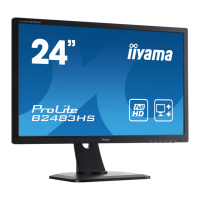
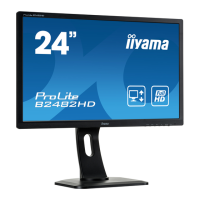
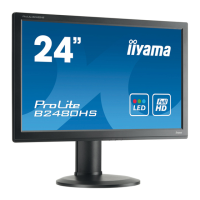
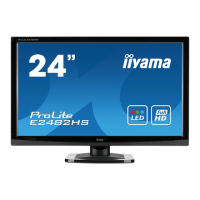
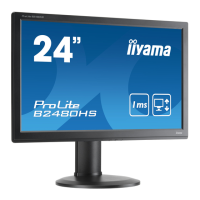



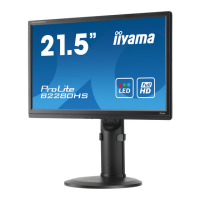

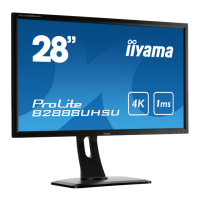

